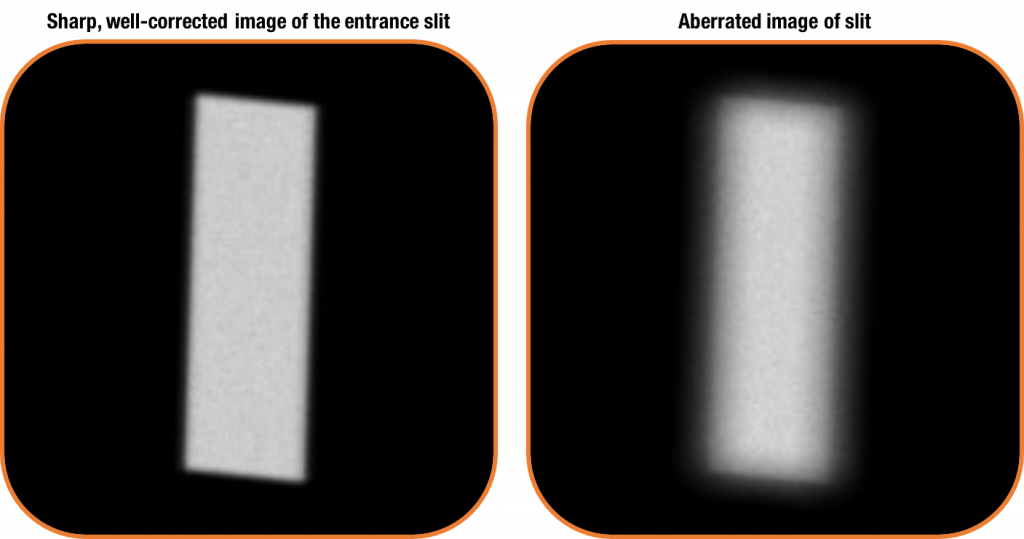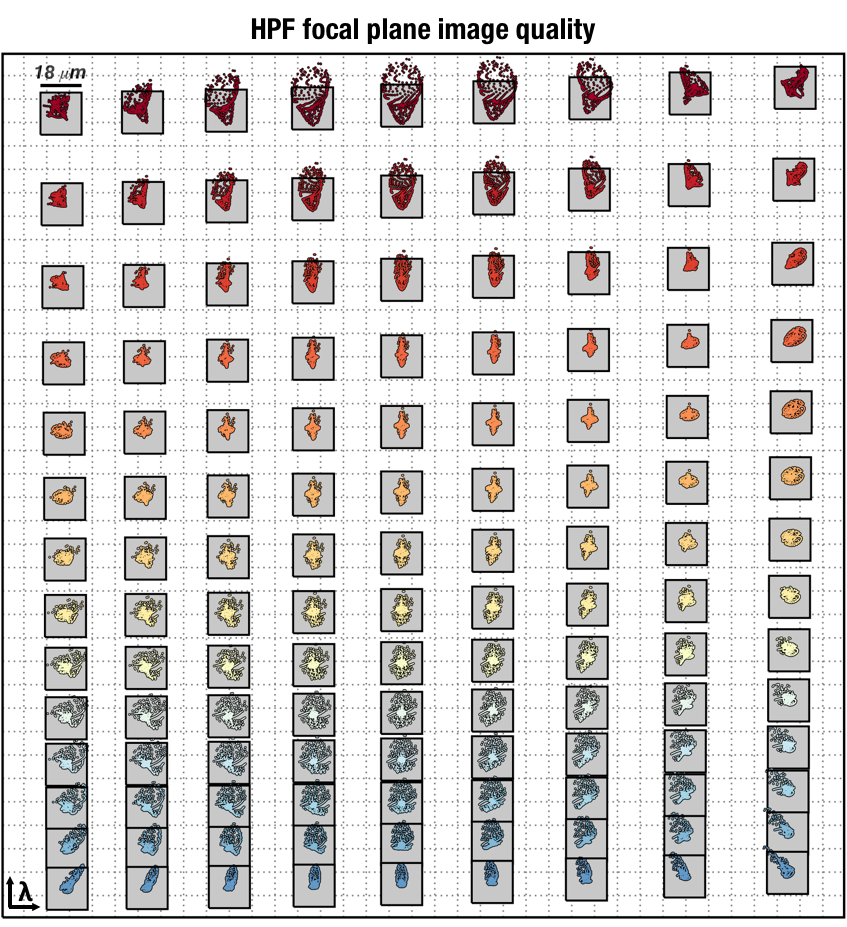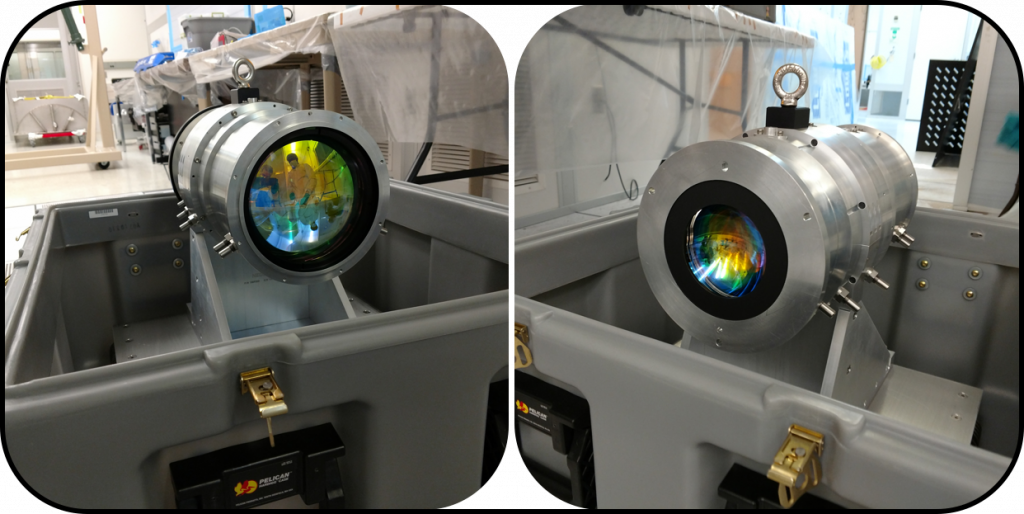Introduction: Spectrometer Cameras
A spectrometer, as the name implies, records a ‘spectrum’ of an object. This spectrum, in its most basic form, is just a series of images of the instrument entrance aperture (whether it be a star, slit, optical fiber, or otherwise) that has been spatially separated based on the intrinsic color distribution of the source. The separation of these monochromatic (single-wavelength) images depends on the dispersion properties of the spectrometer.

Simulated star and wavelength calibration source spectra, as recorded by the HPF spectrometer. The calibration source spectrum (center channel), in this case a highly specialized laser source which only emits at discrete wavelengths, produces a spatially separated set of images of the spectrometer entrance slit. On the other hand, starlight (bottom channel), contains flux across a broad range of frequencies. This produces a continuous spectral image across each diffraction order.
The optic at the heart of the spectrometer, the high dispersion echelle grating, provides the chromatic dispersion required to separate the individual colors encoded in the incoming starlight, but it is the spectrometer camera that ultimately produces our final image of the stellar spectrum.

Cartoon overview of the HPF spectrometer optical train. Light from the telescope exits the fiber, gets dispersed by a pair of diffraction gratings (first the high dispersion Echelle grating, then the volume phase holographic grating), and is finally imaged onto our infrared detector array by the HPF camera. The camera assembly provides the needed focusing mechanism to deliver our final spectral image.
The spectral resolution of the spectrometer, which tells us how well we can separate individual colors, is entirely set by the properties of the entrance aperture and diffraction grating(s). However, the spectrometer camera must also have pristine image quality, or else our spectral resolution will suffer. Any blurring of the image of the spectrum due to uncorrected aberrations within the camera will degrade our ability to separate individual colors of the star.

Example of image quality degrading spectral resolution. On the left shows a near-diffraction-limited image of our spectrometer slit, while the right shows a highly aberrated image. The effective spectral resolution of the aberrated slit image (right) is nearly 5% lower.
The HPF Camera
Our spectrometer resolution directly affects how well we can measure minute stellar radial velocity shifts, so typical high resolution Doppler spectrometers require specially designed cameras that maintain excellent image quality across all of the diffraction orders. This high level of image quality is also needed to lower our sensitivity to illumination changes coming from our optical fiber delivery system.

Image quality of the HPF camera across the wavelengths that fall onto our infrared detector. The grey boxes represent individual detector pixels, magnified by a factor of 1000x. The colored points show the aberration distribution produced by the camera and upstream optics (a ‘perfect’ imaging system would have no geometric aberrations). As you can see, the expected aberrations in the system are, for the most part, far below what we’d be able to measure in single pixel. This means that the camera will produce a sharp, well-corrected image of our entire spectrum.
The HPF camera system, designed by team member Christian Schwab and fabricated by New England Optical Systems and Optimax Systems, was recently delivered to PSU and is now undergoing vacuum and cold testing.

The delivered HPF camera system! The camera is made of specialized lenses, which are coated with custom anti-reflective coatings. These complex coatings (appearing as green-yellow tints in the images) ensure that we capture every last photon from our targets. The mechanical assembly is unique in its own right; as the camera cools to the HPF operating temperature, the mounts compensate for thermal expansion differences between the various glasses and the aluminum housing. This allows us to test the camera both at room temperature and at the 180K operating temperature of HPF.
With the camera now delivered to Penn State, we’ve received almost all of the optical components for HPF. We’re now knee-deep, for the first time, in our alignment and testing of the entire optical system. Stay tuned!

 RSS - Posts
RSS - Posts